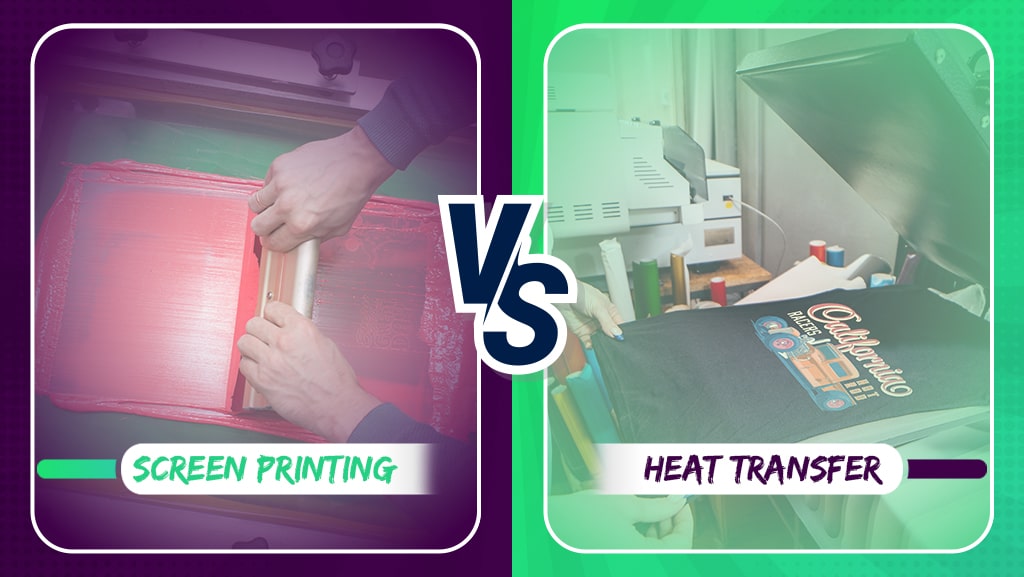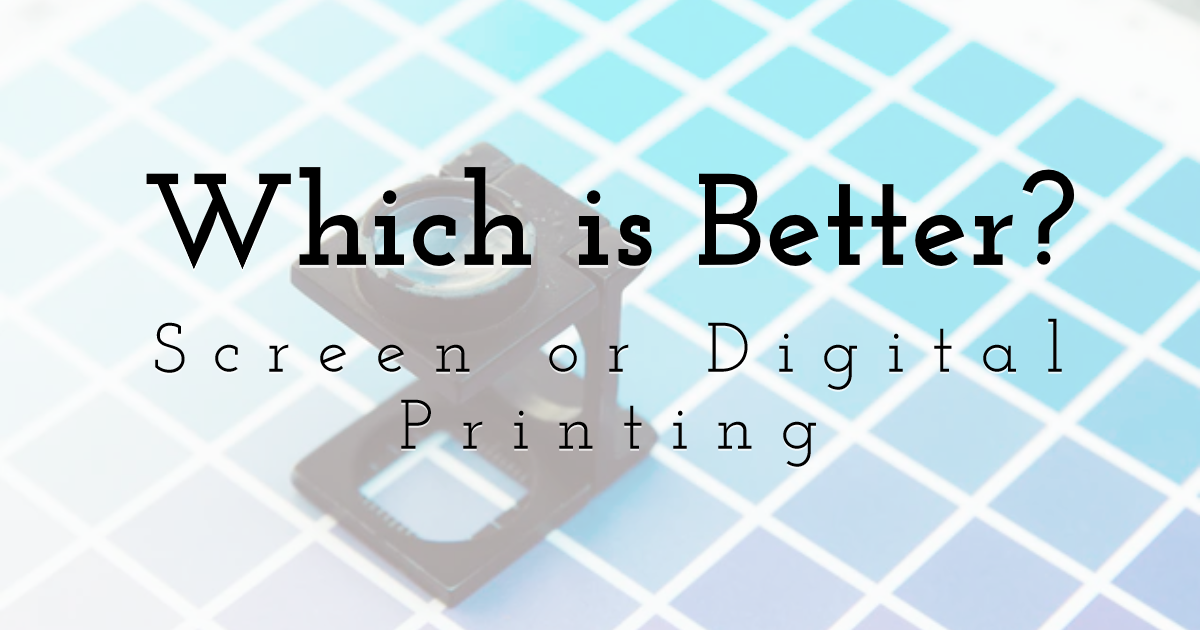The Definitive Guide to Tx Tees
The Definitive Guide to Tx Tees
Blog Article
The Buzz on Tx Tees
Table of ContentsThe Facts About Tx Tees Uncovered10 Simple Techniques For Tx TeesThe Definitive Guide to Tx TeesThings about Tx TeesTx Tees for DummiesTx Tees Things To Know Before You BuyTx Tees for Beginners
Include up other prices, like the number of energies it takes to run the shop and the price of ink and emulsion per layout. Take the print below.The solution should only be a few cents since you 'd only need to layer one display for this work. Generally, printers try to make up to 45% profit on a print job.

With DTF, you can publish a handful of t shirts, or simply one. Utilize the same calculator as the area over to determine how much profit you would certainly make using DTF transfers. Compare the prices and earnings to whichever technique speaks ideal to your setup and procedure. Both screen printing and DTF have their niches on the planet.
The 6-Minute Rule for Tx Tees
The finest way to understand? Ask about and see what print stores like yours are doing. custom monograming. Try both out and see which you like much better
When you're selecting what sort of printing approach to utilize for printing your artwork layouts on your garments, it is necessary that you understand the differences in between these 2 strategies so you can take full advantage of outcomes while decreasing prices. Display printing is one of the most commonly used method for printing styles on textiles.
DTG printing is likewise called area or straight to garment printing due to the fact that it publishes just what is required rather than making a display as display printers do. https://trello.com/u/txtees02/activity. Display printing functions by display filler squeegee screen printing ink screen mesh screen, after that transferring the image to garment making use of warm and/or stress
The DTG printer utilizes special dye-sublimation inks that are applied right into a pre-designed picture by a digital printing system. The inks become part of the textile, permitting for dynamic shades and phenomenal detail. It's additionally called place or direct to garment printing because it publishes only what is required as opposed to making a screen as display printers do.
How Tx Tees can Save You Time, Stress, and Money.
Initially, it's much quicker - you can print a fullcolor image in mins, instead of hours for display printing. Second, there's no established time or expenses included - you can publish any kind of design you like, without having to create a screen first. Third, there's no waste - since display printers display print one layout each time, they have to screen each shade individually.
The paper is really expensive and can only be used once. Once it's printed on, it needs to be discarded. - The initial purchase price is lower than the upfront financial investment of DTG printers- You can publish multi-color layouts one display each time rather than having to print each color individually like DTG printing.

3 Simple Techniques For Tx Tees
Nonetheless, as opposed to utilizing display mesh as screen printers do, color sublimation printers use laser innovation to move your images onto garments or paper. A heat process moves the color from its solid-state directly into the gas phase which subsequently integrates it onto fabric substrates when they are swiftly warmed to heats under high pressure.
Sublimation printing is eco-friendly. It utilizes less water than screenprinting, and because it doesn't include making use of damaging solvents, it's secure for all kinds of garments. The dye sublimation inks are also odor free when treated, unlike display printers that make use of harmful chemicals during the screen printing process that leave behind an unpleasant odor.
They also save money on costly equipment like exposure units because dye sublimation printers don't require a UV exposure unit or a flash cure oven that is usually utilized in display printing (custom screen printing). What is straight to garment printing (DTG Printing)? DTG printing is a digital screenprinting procedure that prints directly onto material using specialized inkjet printers
Things about Tx Tees
DTG printing offers several advantages over conventional screenprinting, consisting of the capability to print photo high quality images, better color vibrancy, and the ability to publish designs on darker textiles. DTG printers work by heating the fabric ink until it transforms into a gas. The gas after that permeates the fabric, bonding with the fibers to produce a permanent print.

Screen printers simply prepare their screen after that begin printing up until they run out of product or ink.- There is a vast array of skilled display printers throughout the globe, which can be handy for newbies. - It's a slower process - screen printers typically have to wait for the ink to dry prior to they can publish the next color- Display printers need hands-on labor, so there's a higher knowing contour and it takes longer to generate a high-grade layout- Screen printing isn't as precise as DTG printing, so you may obtain some "bleeding" of colors from one component of the photo onto one more if not done correctly.
The Basic Principles Of Tx Tees
Nonetheless, as opposed to using display mesh as screen printers do, dye sublimation printers use laser modern technology to transfer your photos onto garments or paper. A warm process transfers the color from its solid-state directly right into the gas stage which in turn merges it onto fabric substrates when they are swiftly heated to high temperature levels under high pressure.
Sublimation printing is environmentally friendly. It makes use of less water than screenprinting, and since it does not entail the usage of harmful solvents, it's risk-free for all kinds of clothing. The dye sublimation inks are additionally unsmelling when cured, unlike display printers that make use of unsafe chemicals during the screen printing procedure that leave behind an undesirable odor.
They also conserve cash on pricey equipment like direct exposure devices since color sublimation printers do not call for a UV exposure unit or a flash treatment stove that is generally made use of in display printing. What is straight to garment printing (DTG Printing)? DTG printing is an electronic screenprinting procedure that publishes directly onto textile making use of specialized inkjet printers.
3 Simple Techniques For Tx Tees
DTG printing uses many benefits over typical screenprinting, consisting of the capability to print photo high quality images, greater shade vibrancy, and the capacity to publish designs on darker materials. DTG printers function by heating the fabric ink up until it becomes a gas. The gas after that permeates the fabric, bonding with the fibers to create a permanent print.
Report this page